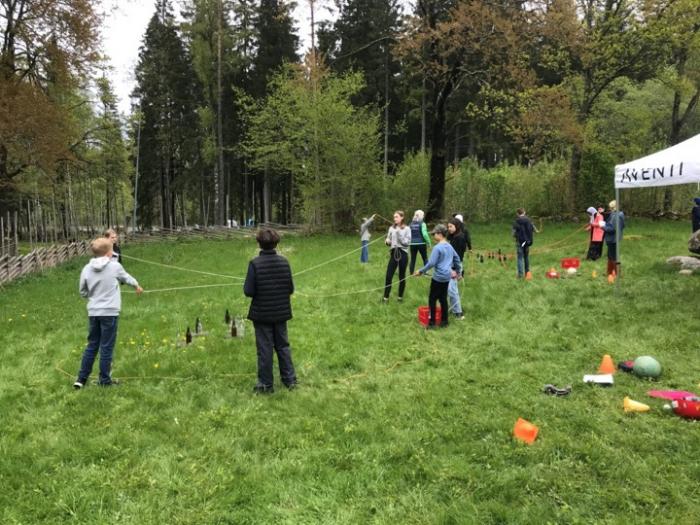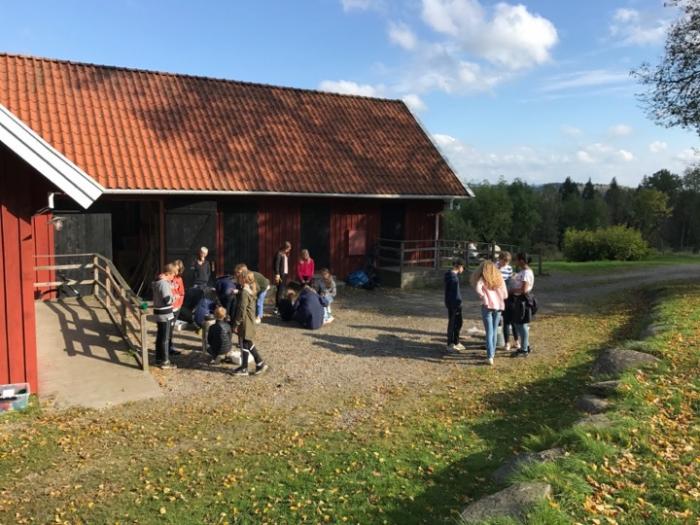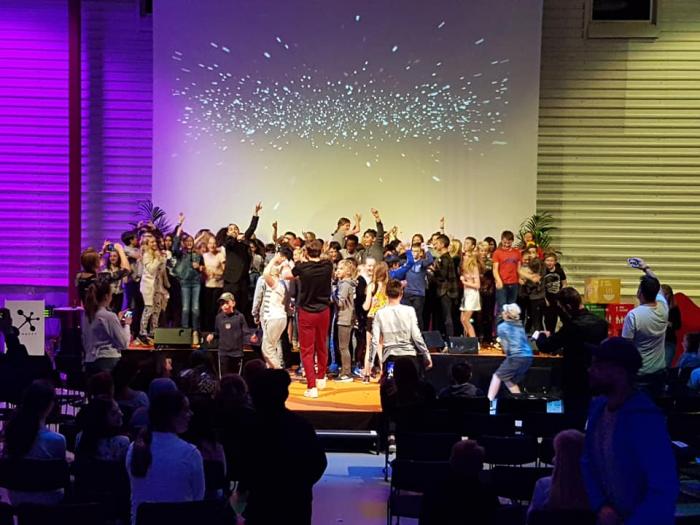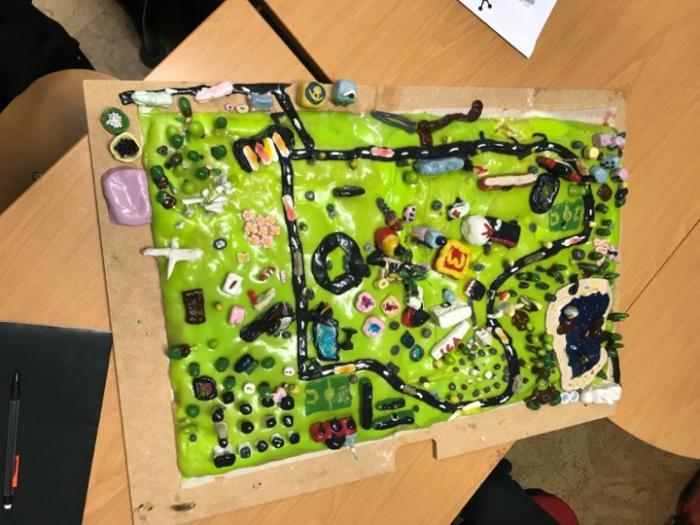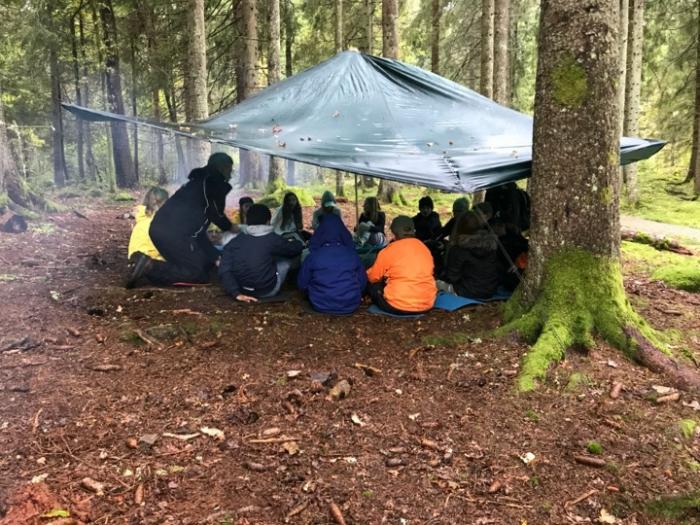I. SUMMARY INFORMATION
Project
268372
Status
Submitted
Award category
Interdisciplinary education models
You want to submit
NEW EUROPEAN BAUHAUS AWARDS : existing completed examples
Project title
The Sustainable Dream City
Full project title
The Sustainable Dream City
Description
The Sustainable Dream City is raising sustainable awareness amongst our young thru knowledge, engagement and democratic processes. A creative and year-long process of really learning what Agenda 2030 and the Global Goals are all about and how it affects our society!
Where was your project implemented in the EU?
Sweden
Västra Götaland/Boråsregionen
Skaraborgsvägen 1A
Borås
50630
When was your project implemented?
Has your project benefited from EU programmes or funds?
No
Which programme(s) or fund(s)? Provide the name of the programme(s)/fund(s), the strand/action line as relevant and the year.
II. DESCRIPTION OF THE PROJECT
Please provide a summary of your project
The sustainable Dream City (TSDC) is a one-year interdisciplinary teaching model that integrates the values of sustainability, democracy, inclusion, and aesthetics in the content of the Swedish curricula and in the learning processes for the participating children (age 11-12) and their teachers. This innovative model of training for sustainability is based on collaborations with the surrounding society and the systems and companies providing sustainable waste management/energy resources to Borås. The model is divided into four main themes; Systems of the city, Consumption, Transports, Cycles/circularity of sustainability. All four themes include science, math, arts, and social studies. After having run this project for several years, it is obvious that this is an activity that is human-centred and positive - a tangible experience for the participants; both students and teachers. There is time in the project over the year to feel, see and experience the possibilities in sustainable transformation and the way it enhances our quality of life. TSDC is bridging the global challenges with the local solutions to achieve our climate targets and support a broader transformation perspective; the final task when the children are REALLY creating their Sustainable dream city in the shape of a creative project (model building, art-exhibitions, dance performances, singer-song-writing, etc) shows this year after year.The Sustainable Dream city is about how sustainable concerns and challenges are a part of the daily lives of the children, their teachers and all of us; focusing on better living together in more beautiful, sustainable and inclusive places that can change to the better.
The dimensions sustainability, aesthetics, democracy and inclusion are key areas for all involved and are guaranteed by Navet staff. Over the year they are leading activities, communicating weekly with classes about their questions and organize collaborations with companies
Please give information about the key objectives of your project in terms of sustainability and how these have been met
1. Knowledge about sustainability issues connected to the society we live in; thru knowledge about systems, science, technology, inclusion and social aspects. This is divided into the areas Systems of the city, Consumption, Transports, Cycles/circularity of sustainability to make it easier for schools to approach. Teachers and students can choose to work with many different tasks in each area.
2. Reach both teachers and students with the challenges in the same project. But not on their own; both teachers and students get support from Navet during the year by participating in activities in Navet science center, outdoor activities, study visits at different facilities taking care of garbage or energy production, meeting people working with sustainable systems/research and receiving weekly support from Navet concerning questions and challenges in their job at school.
3. Maintain good and long-term collaboration with local companies that work with the challenges of sustainability in the city - we are better together.
4. Connect the activities to the Swedish curricula about sustainability, making sure that they are carried out for a long period of time instead of short periods that are more common in schools. This means more time for reflections and possibilities for action. This helps teachers support students to better receive their goals.
5. Continuously developing new ways of teaching and models for sustainable communication with the teachers and students. This is benefitting both the participants in the project as well as others in Navet´s activities.
6. Making it clear for all involved that there are possibilities for sustainable transformation in a local context as well as challenges that we need to address together. But also looking at the bigger picture thru the context of the Global Goals.
Please give information about the key objectives of your project in terms of aesthetics and quality of experience beyond functionality and how these have been met
1. We see that the use of a mix of methods makes this accessible to many. Our use of art, music, model-building, the outdoors of the city, nudging, and more makes the project accessible to all children and we are also able to attract more teachers than the ones teaching science. The four areas Systems of the city, Consumption, Transports, Cycles/circularity of sustainability guarantee that the participants will learn that sustainability has many different approaches and concerns.
2. The challenges and the number of questions raised in this project are huge, and nothing that schools can be expected to grasp on their own. The continuous support from Navet and the companies over the year make this complex situation a manageable learning process.
3. By working closely together we find new solutions over time, not only in the project at hand.
4. In connection to the Swedish curricula aesthetic values and activities are as important as science and technology. However, it is crucial that all ingoing subjects will have an important role in the activities and get their time and depth; that way teachers can support students to receive their goals thru the project.
5. Continuously developing new ways of teaching and models for sustainable communication with the teachers and students in order to reach everyone and reaching beyond the group at hand with the results. Navet is always meeting new groups that benefit from the continuous process of finding best practices.
6. Sustainable transformation in a local context is connected to the world's challenges in so many ways; meaning things we learn at home are similar elsewhere. Global sustainable citizenship is up for grabs for our participants in The Sustainable Dream City.
Please give information about the key objectives of your project in terms of inclusion and how these have been met
t1. We know that there are big differences in knowledge about sustainability issues connected to our daily lives in different parts of our city. Knowing this, we encourage schools from different parts of the city to participate by making personal contacts in good time before the project starts each year and teachers from the entire city are invited to meetings about the project.
2. Reach both teachers and students with the challenges in the same project. We make sure that activities within the project are accessible to all participants concerning disabilities and that everything is free of charge. If extra transportation is needed, the project provides it. A smaller group of Navet staff (one man and one woman) are responsible for this project in order to be well known to all students over time; one aspect here is that students shall know who they are "talking to" when asking questions digitally.
3. In all groups of company representatives we try to make it as diverse as possible to make the children see that jobs within these fields are accessible to many.
4. Goals in the curricula about accessibility and inclusion or all are carried out in close collaboration with the teachers responsible. The full year makes it possible to find individual solutions when needed.
5. Navet´s approach with hands- on - activities and practical content (experiments, company-visits, outdoor-actvities...) makes this project accessible beyond differences in language and ability to concentrate. Many teachers see this project as a place where differences are levelled.
6. This project, and many more at Navet, point out that we need to be aware that there are different challenges and a need to use different approaches in our city. Working with children from all parts in the project makes this an ongoing process close to the people living here.
Please give information on the results/impacts achieved by your project in relation to the category you apply for
The Sustainable Dream city is a one -year long interdisciplinary education model, combining science, social science, art, math, and technology with sustainability; tasks varying from the super-local to national and international aspects. It is organized in our local community every year since 5 years back and has reached thousands of students age 11-12 every year since the start. The education models and methods used, completely integrate the values of sustainability, inclusion, and aesthetics with the content of the Swedish curricula and in the learning processes of both students and teachers participating. Every year, new content is added that is supporting innovative models of training for professionals (teachers) based on the interdisciplinary integration of science, arts, and social studies. Navet´s hands-on approach and close collaboration in the partnerships guarantee the use of a variety of learning methods that are practical and accessible to all. During the last year, we have been approached by other cities of Sweden, interested in creating their own Sustainable Dream City project, based on our model. The companies engaged in the project consider this to be amongst their number one projects within citizen participation, democracy, and learning for life. The long-term collaboration between the organizing parties (Navet, the companies, staff from the nearby University) has resulted in other collaboration activities in the field of sustainability. Hopefully, the Sustainable Dream City will continue to add value to the all in all development of Navet´s sustainability development, reaching many more children in the future and addressing more and new challenges down the sustainable road.
Please explain the way citizens benefiting from or affected by the project and civil society have been involved in the project and what has been the impact of this involvement on the project
The students involved, our young citizens now and the adult citizen of tomorrow, as well as many others that will be part of the tasks that the students work with. They are affected and made participants as many things are carried out not only in the school; student art exhibitions, showing their models at libraries, talking about their work on parents-days, etc. By working during an entire year, these learning processes become way more accessible to many in comparison to shorter projects that are more normal in schools. Nudging activities and local campaigns for sustainability that the students plan and carry out will be involving larger groups of citizens more directly.
Please highlight the innovative character of the project
The project is and breathes long-term innovative sustainability processes and all activities are based on entrepreneurial skills. A year´s work guarantee that learning processes for sustainability that need time to settle, become real, be discussed, and investigated can do so. Every theme area touch upon historical perspectives, the here and now, outlooks in the world and close by, digital learning, ecological concerns (like biodiversity), and creativity. The classes choose a pace that suits them, and there is a variety of tasks to choose from, guaranteeing that they do not have to do anything that they might have done before or something too complicated for the participants. All classes take part in activities at Navet, at company facilities and in the local newspaper. In the concluding activities of the project, the students (with the support from their teachers and Navet staff) choose a creative method to present the areas of knowledge that they have accomplished over the year and they are by doing so presenting their Sustainable Dream City. Their achievement is not only presented to their peers, but also to the participating companies, experts from the University, and Navet staff. Finally all participants have a sustainable get-together (not now in Corona-time unfortunately) and get to meet all "Sustainable Dream Cityists".
Please explain how the project led to results or learnings which could be transferred to other interested parties
During the last year, we have been approached by several other cities of Sweden, interested in creating their own Sustainable Dream City project, based on our model. The companies engaged in the project consider this to be amongst their number one projects within citizen participation, democracy, and learning for life. Schools that are teaching older students have also been interested in similar models for their age groups. The long-term collaboration between the organizing parties (Navet, the companies, staff from the nearby University) has resulted in other collaboration activities in the field of sustainability. Hopefully, the Sustainable Dream City will continue to add value to the all - in - all development of Navet´s sustainability approach, reaching many more children and teachers in the future and addressing more and new challenges down the sustainable road (not for cars as we know them).
Is an evaluation report or any relevant independent evaluation source available?
III. UPLOAD PICTURES
IV. VALIDATION
By ticking this box, you declare that all the information provided in this form is factually correct, that the proposed project has not been proposed for the Awards more than once under the same category and that it has not been subject to any type of investigation, which could lead to a financial correction because of irregularities or fraud.
Yes
